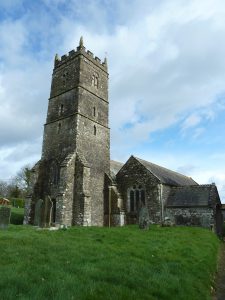Golliwogs
The origins of the Golliwog begin with the British soldiers who occupied Egypt near the end of the 1800’s. Egyptian labourers working for the British bore the letters W.O.G.S. on their armbands, indicating that they were Working On Government Service. These labourers were spoken of as Ghuls- the Arabic word for desert ghosts – by the British troops. The children of the Egyptians played with black stuffed material dolls. These dolls in turn were given as gifts or purchased by the soldiers returning home to England. These dolls became known as Ghuliwogs, a name which become Golliwog
Florence Kate Upton, struck upon the character in 1895. Born into an eccentric English family  who had recently emigrated to the United States, Florence found work as an illustrator and formulated the idea for a children’s book. Stuck for a main character, her aunt, found an old battered black-face rag doll in the attic. “ I called him ‘Golliwogg’” The Adventures Of Two Dutch Dolls And A Golliwogg, was soon published.
who had recently emigrated to the United States, Florence found work as an illustrator and formulated the idea for a children’s book. Stuck for a main character, her aunt, found an old battered black-face rag doll in the attic. “ I called him ‘Golliwogg’” The Adventures Of Two Dutch Dolls And A Golliwogg, was soon published.
In this tale, the Golliwogg was initially described as ‘a horrid sight, the blackest gnome’, but turns out in fact to be good, loveable and brave, with a ‘kind face’.
He proved an instant hit with the British public, and Florence proceeded to publish a whole series of Golliwogg adventures.
They failed to trademark the Golliwogg character, and after the books had proved such a hit, toy companies jumped on the bandwagon. Slightly changing the name, they released a flurry of ‘Golliwog’ dolls, toys and badges.
Then, in 1910, John Robertson of jam manufacturing family saw children playing with a golliwog doll and decided it should be the company’s mascot. In the 1920s the company began producing Golliwog badges and enamel brooches which could be claimed by collecting tokens from jam jars. As more golliwog toys, watches and dinner sets were produced, the figure became part of everyday life and began to pop up in numerous children’s books.
It was in some of these stories, however, that they fell foul of the unpleasant racist stereotyping that has made the golliwog such a contentious figure in recent years. Children’s author Enid Blyton is seen as a major culprit, after portraying golliwogs in her Noddy stories as naughty thieves who once pinched Noddy’s prized yellow car.
Meanwhile, the word ‘wog’ began to be used as a derogatory word for black people. First popularised during World War II, it was uttered by some British soldiers as a slur against North Africans and other dark foreigners. By the 1960s, both the use of the term ‘golliwog’ and the dolls themselves were under increasing attack. Seen at best as racially insensitive and at worst as racist and vicious, golliwogs were gradually removed from public life. In 1983, the Greater London Council banned Robertson’s products from its jurisdiction, and in 1988 the character was no longer used in TV advertising.
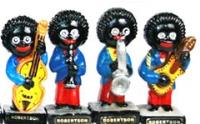
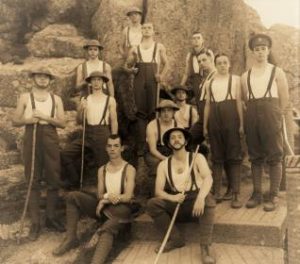
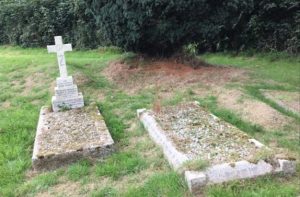
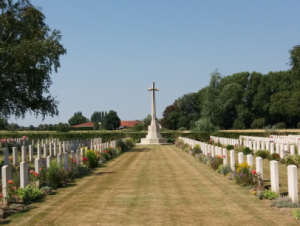
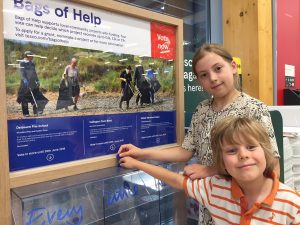 Esme and Seth Blaze show their support for Callington Town Band’s Community project, ‘And Some Came Home’, when they put their tokens in the Town Band ‘Bags of Help’ slot at Callington Tesco. With just a week or so to go they are hoping that the Town Band, in which both their parents play, will be a worthy winner.
Esme and Seth Blaze show their support for Callington Town Band’s Community project, ‘And Some Came Home’, when they put their tokens in the Town Band ‘Bags of Help’ slot at Callington Tesco. With just a week or so to go they are hoping that the Town Band, in which both their parents play, will be a worthy winner.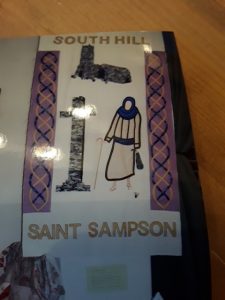 The piece makers of South Hill have kindly given St Sampson’s Church a wonderful quilt showing St Sampson. This will be gratefully received during the service on Sunday 23rd July at 11.15. and will be hung for all to see. Come and learn a bit more about who St Sampson was and what relevance he has today.
The piece makers of South Hill have kindly given St Sampson’s Church a wonderful quilt showing St Sampson. This will be gratefully received during the service on Sunday 23rd July at 11.15. and will be hung for all to see. Come and learn a bit more about who St Sampson was and what relevance he has today.